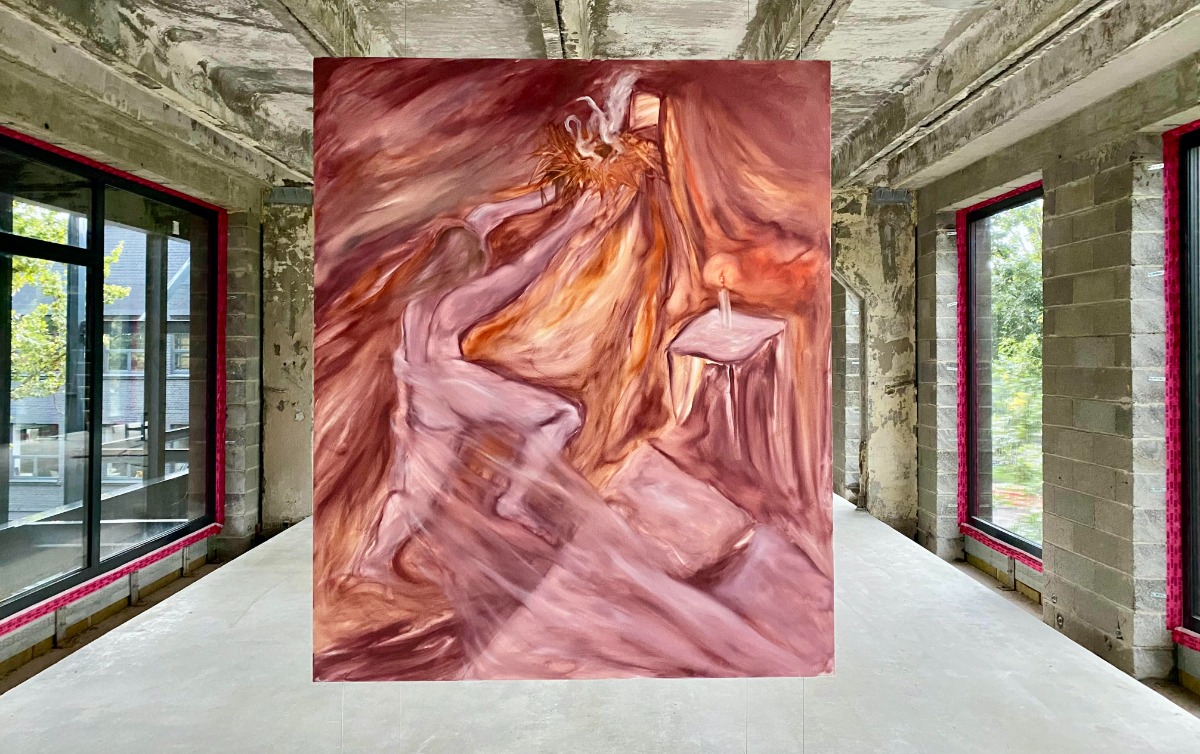
When Simurgh Invites Us to See-More
An interview with Payam Sharifi, member of the Slavs and Tatars collective and one of the curators of Survival Kit 16, which opens today in Riga
The festival Survival Kit 16: House of See-More, curated by Slavs and Tatars and Michał Grzegorzek, takes place from 30 August to 28 September in Creative City Grīziņdārzs, the former Riga Knitting Factory, located in an area that was once a remote, historic workers’ district but has since been reimagined as Riga’s new urban quarter. “Taking Simurgh – the mythical bird found across Eurasia – as a departure point, the annual international contemporary art festival in Riga will address the critical state of transnationalism via the flamboyance of the flaming bird, an understanding of liberation as both metaphysical and political” – this is stated by the concept of this year’s festival on the page of its permanent organizer, The Latvian Centre for Contemporary Art. “Slavs and Tatars and Michał Grzegorzek see in Simurgh a resolutely transnational creature as device – another means of defining a region extending from China to northern Ukraine, and equally interested in the ecstatic as the electorally eligible”.
To find out why this mythical bird, whose name Simurgh has been transformed into See-More, has become so important to the annual key contemporary art event in Latvia, I went to talk with one of the two members of Slavs and Tatars, Payam, in Pāvilosta, where the PAir art residency has been successfully operating for several years.
Survival Kit 16: House of See-More. Installation view. Photo: Kaspars Teilāns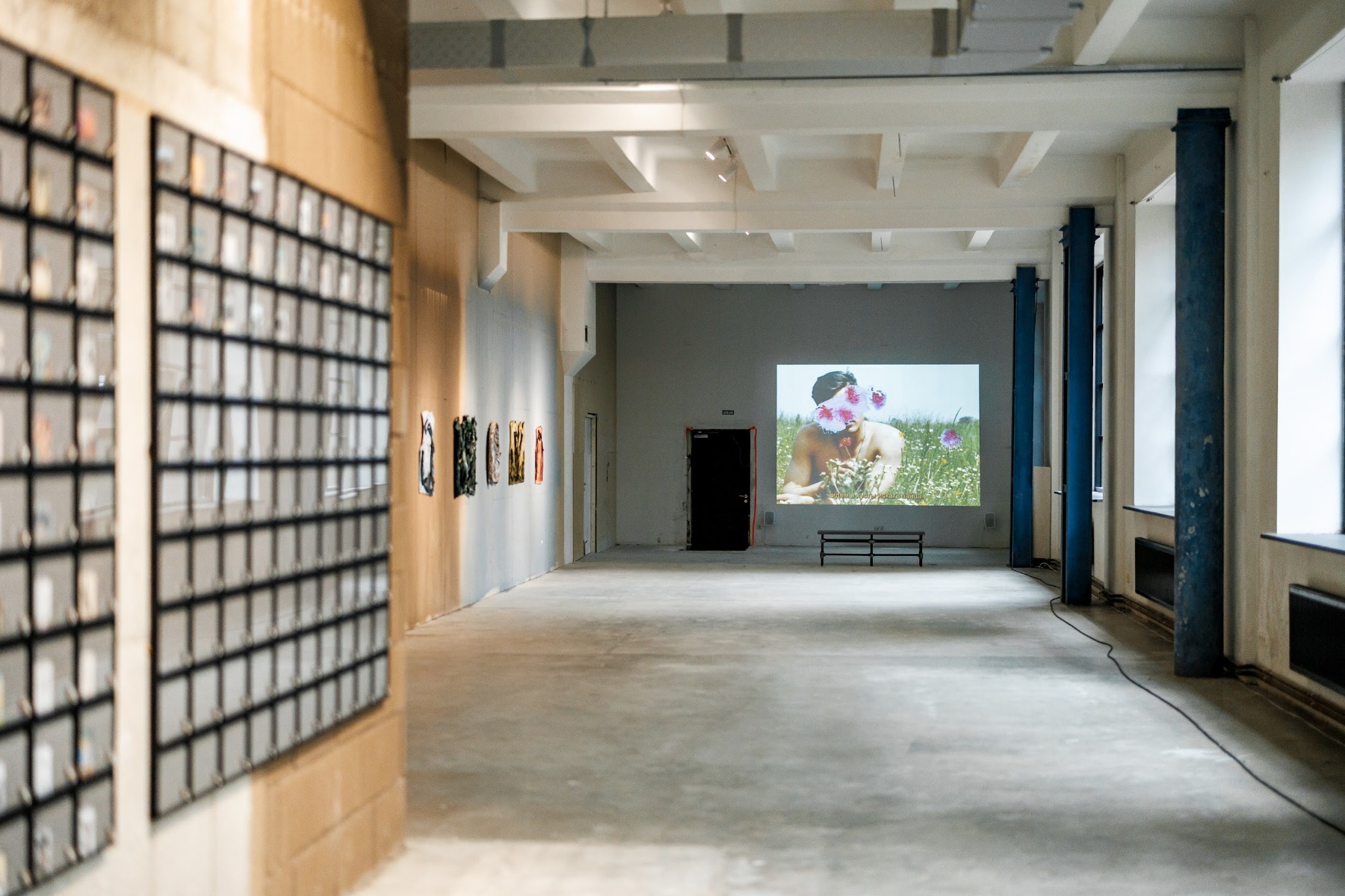
“Slavs and Tatars is a faction of polemics and intimacies devoted to an area east of the former Berlin Wall and west of the Great Wall of China known as Eurasia,” the collective’s website tells us. Having begun their international artistic career in 2006, its members have always somewhat mythologized themselves, not publicly revealing their names and remaining primarily a collective – thinkers, publishers, and artists. “Deeds matter, not names” – that has been their modus vivendi.
That’s why I was so interested to meet one of its members in person. Payam welcomed me with his two children; he fed them lunch, put on a film for them, and only then were we able to talk in one of the rooms of the cozy PAir residency. Payam, elegant, swarthy, somewhat resembling a Captain Nemo from a Jules Verne novel – served me tea with sea buckthorn berries picked right there in the garden. I asked him which language he spoke with his children – Farsi? “If you start speaking English with someone, it overrides all other languages. I speak to the children in Persian, my partner – a Pole – speaks to them in Polish. But we never say a single word in English. On the street, they speak German because we live in Berlin; at school, French. The kids – they understand perfectly, and they think, why learn other languages when everyone speaks English?” “It’s like a master key,” I said. “Why use keys when you have a universal master key?” “Exactly,” Payam replied. And he continued:
…One of the reasons we sent them to French school is not, as some people think, because it’s chic or high class – not at all. If you go to the French library in Berlin, at the Institut français, you see their children’s section: the folk tales they translate are not just from the former colonies, not just Cameroon, Burkina Faso, Senegal, but also from places like Ossetia or Kurdistan.
Following the fall of the Soviet Union and with it Russian, the French language today remains the only language with universal aspirations other than English. Not to dismiss the colonial footprint of French, or the fact that it is in decline, but one must find tactical means to resist English. And beggars can’t be choosers. I guarantee you – I’m absolutely 100% sure – you cannot find the same folk tales, like Ossetian or Kurdish, in English. Everybody thinks English has everything, but it’s not true. English is a transactional language. The reason it’s so successful is because it works well for transactions, for just getting by. It’s not successful because it carries cultural pretensions – there’s no cultural pretence in the English-speaking world. There’s American pop culture, and that’s it. Anyway, we should talk about Survival Kit, sorry.
The curators of Survival Kit 16: Slavs and Tatars and Michał Grzegorzek
But it somehow leads us here. I was reading the description of the concept and came across the words “crisis of transnationality.” And I realized I hadn’t heard the word “transnational” for quite a long time. Why was it meaningful for you to use it there, to make it significant?
Because I think, first of all, the identity politics we’ve been living through over the past, I don’t know, 20 or 30 years, was part of this liberal order. It allowed for a kind of multiplicity. The idea was that you could say you’re Latvian-Russian writer, I could say I’m an Iranian-American artist. These hyphenated identities. But for me, even this hyphenation shows the poverty of our thinking. It tries to adapt to a 19th-century national view of identity – that we each have a single identity, or at best, a few layered ones. Whereas I would say we are always multiple, even within what looks like a single identity.
There’s no such thing as a single Iranian identity. There’s no single Latvian identity, no single Russian identity. And one of the things that was important for us, when we were invited to this exhibition, was that the full-scale Russian invasion of Ukraine accelerated processes that had already begun back in the early ’90s. The rest of the former Soviet space intensified efforts of decoupling, of real decommunization: removing monuments, supporting one’s national language. For example, young people today in Kazakhstan are speaking much more Kazakh with each other – which is fantastic. These are all important, positive things. But the problem is, if differentiation is the only process, it can also lead to a narrowing of oneself. What we’re interested in – and some others too – is not to narrow the path, but to widen it. So the question becomes: what can we find that is common among these former states? I don’t like the term “post-Soviet,” but I’ll use it here because there’s no alternative yet. Hopefully someone will come up with one soon.
But let's say all this, what does, what does Tallinn have to do with Almaty, Almaty with Tbilisi, Tblisi with Warsaw? We believe that there are things that connect these places that are not top down Moscow imposed imperial projects. And the question then becomes, what are these things and, and how can we find and identify these things? And how can we use these as a kind of yeah, it's another form of, of language or of, of some source, you know?
And Simurgh was one of these symbols. In our practice as artists, we’ve often turned to such shared cultural elements. For example, we’ve used the pickle: pickling is something you find all across this region. Fermentation stretches from Mongolia all the way to Germany – it’s a whole fermenting space. The French don’t ferment, the Italians don’t ferment, because they didn’t have to. They always had fresh vegetables, so there was no need. Wheat is another language of this space. Working with wheat not just as nourishment but as an aesthetic, sculptural, decorative medium. These traditions carry meaning.
And Simurgh is another example. Most people think of it as purely Persian, as an Iranian bird. And indeed, for Iranians it’s so familiar that if you say “Simurgh” to anyone connected to Iranian culture, it’s like asking someone in Germany about the eagle – immediately understood. But people often forget, or overlook, that the Simurgh exists across the Turkic world as well. From Siberia, among the Bashkirs, all the way to the Caucasus and Turkey, there are versions of the Simurgh.
What surprised us was that the Simurgh actually reaches as far as northern Ukraine. In Chernihiv, for example, you find the last traces of the Slavic pantheon’s Christian god, Simargl – a winged divine creature, often shown as a dog or lion with wings, associated with the hearth fire and the protection of seeds and new growth. In the Chernihiv cathedral there’s an image of this Simargl, like a kind of griffin or dragon, with wings and fire coming out. And what’s interesting is that if you go to Poland, there is no Simurgh. It’s purely eagles. Which again raises the question: how can we redefine our geopolitical spaces not through politics – not through this endless, stupid Cold War framing or “is Ukraine East or West?” – but through symbols. For example, Simurgh and Eagle. The Simurgh stretches, let’s say, from mid-Ukraine all the way to Xinjiang and the Uyghurs. The Eagle, meanwhile, dominates from Poland westward, across the United States and other Western nations. The eagle is everywhere in the West – on the German flag, the Polish flag, the American flag.
And I think the link to Latvia and the Baltics more broadly is that this is a very liminal space, historically and today. It sits between language systems, between alphabets, between languages, between faiths – whether Lutheran or Orthodox. And for us, these are precisely the kinds of places that can better understand the notion of transnationalism.
Survival Kit 16: House of See-More. Installation view. Work by Sana Shahmuradova Tanska. Photo: Kaspars Teilāns.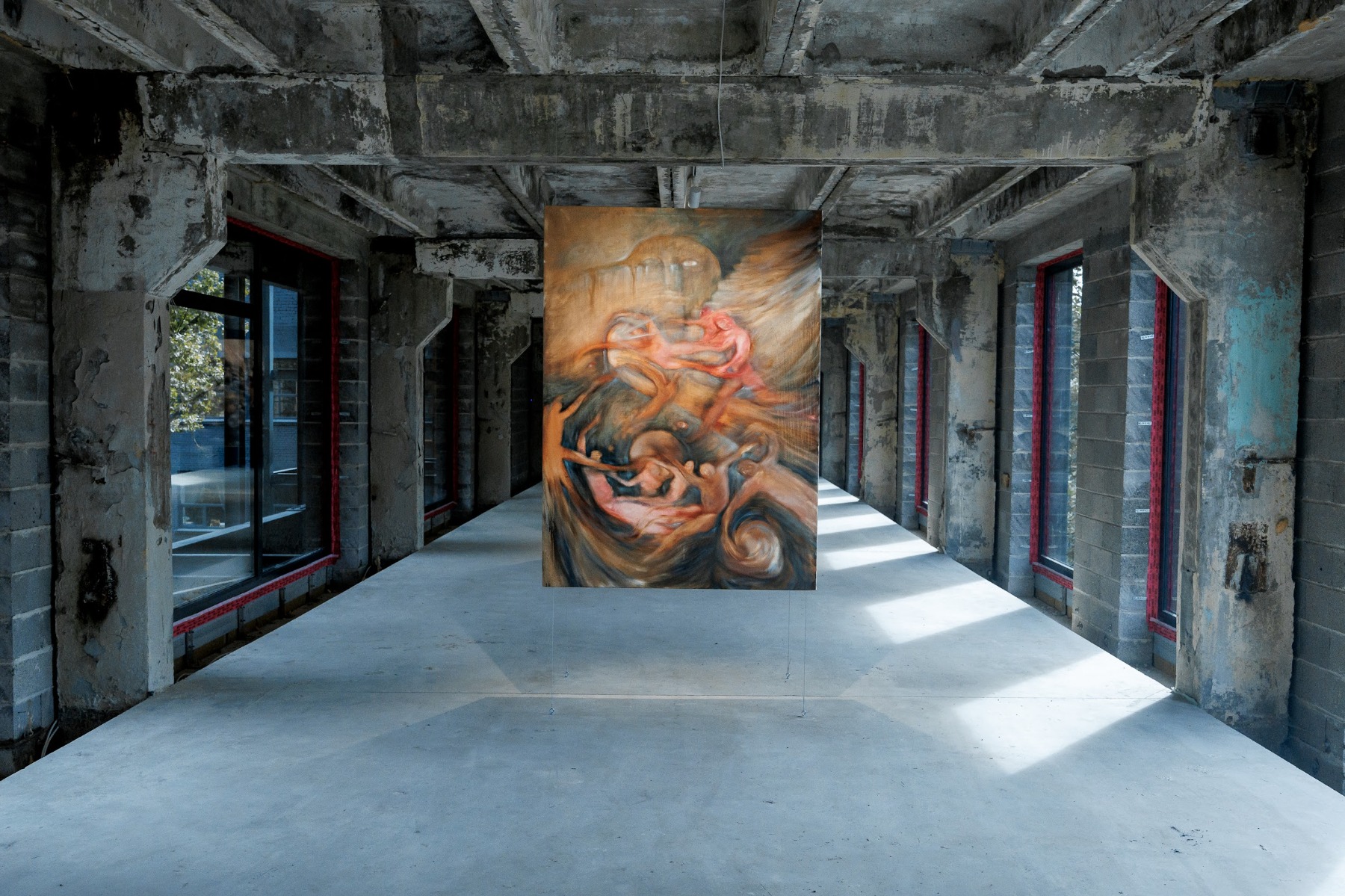
Do you mean in the cultural field, or more in everyday life?
This question of transnationalism? I think it’s really about everyday life. Unfortunately, it’s been – how would you say – sullied, or considered compromised, because of its associations with Druzhba narodov or mnogonacionaljnost’. Even in the West, multiculturalism – this idea itself – is under threat today. But multiculturalism is very different from transnationalism. I personally believe more in transnationalism than multiculturalism. And transnationalism doesn’t necessarily mean mixing.
It can also mean side by side. I think the idea of multiculturalism is kind of an American – more Anglo-Saxon – idea. You know, like a salad: everything mixed together, tomatoes with cucumber, cucumber with onions, onions a little with lettuce. I don’t think that’s necessarily the most interesting analogy. I think it’s much more interesting when things can exist side by side, next to each other. And that “next to each other” – that’s really important to understand.
I think the reason we focus so much on our region is that it’s, by definition, a very multi-faith, multi-ethnic space. And often, this kind of space is associated with the idea of harmony – holding hands, a small world, everything sweet. But historically, not just in the 20th century, in the past as well, whenever there are multi-ethnic, multi-faith places – from Spain under Muslim rule to Central Asia during the Islamic golden age – there were always moments of violence and friction. But there were kind of release valves, ways to let that tension out. I wouldn’t say it makes violence OK – it’s never OK to be violent – but societies need ways for tensions to express themselves without threatening the whole system.
I think now we have people who don’t really want to explore the complexity of their identities. They just want to say, “I am this, I am white American; you are brown Muslim, or this or that.” There’s less tolerance for greys, for ambiguity, for those in-between spaces.
The people who want things to be simple.
Yeah, they want things to be simple. Absolutely.
Kexin Hao. Revolution is a Dinner Party. Photo: Kaspars Teilāns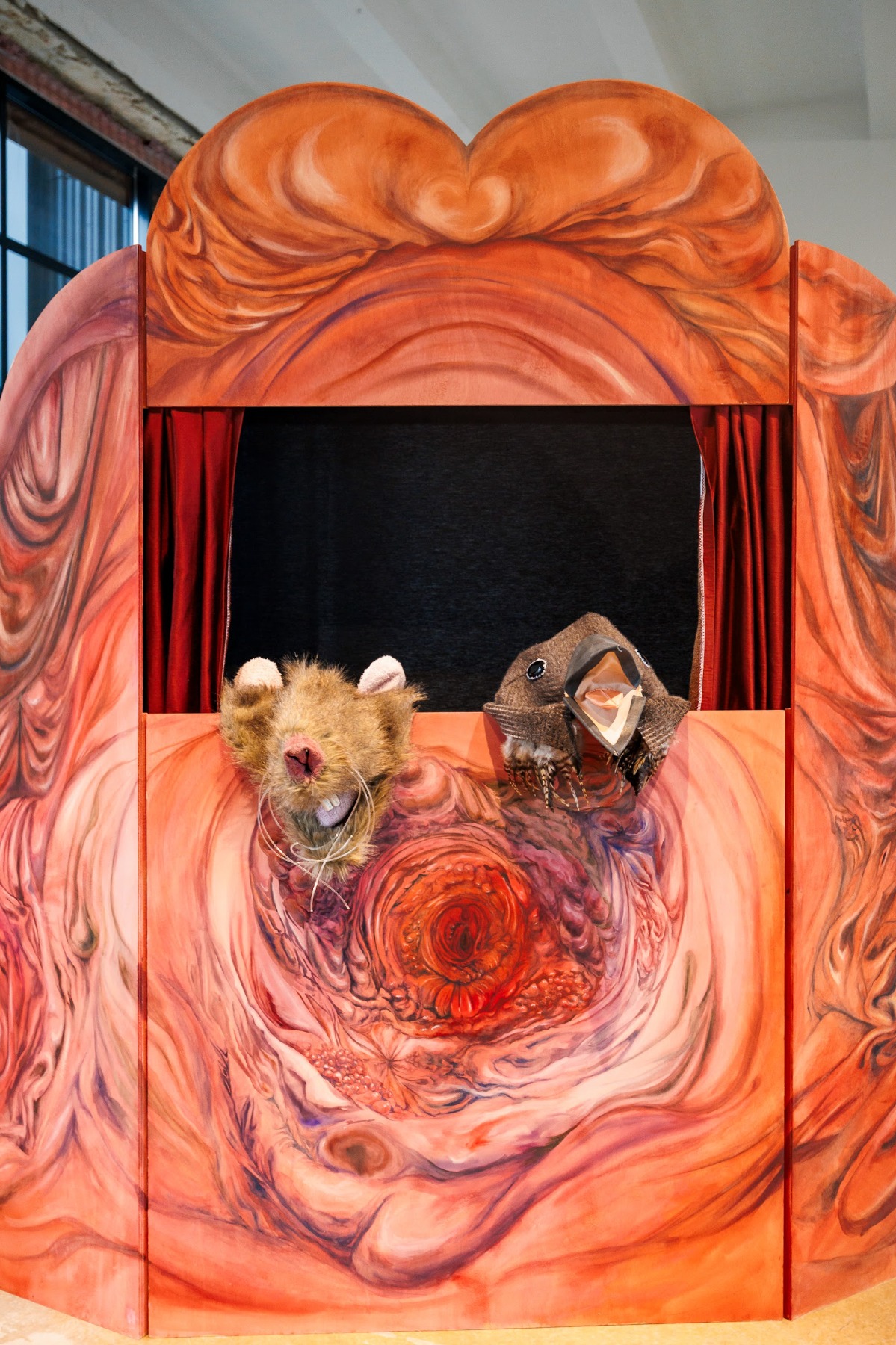
So in this situation, what is the mission of Survival kit or how “we all can make things better”?
I think we’re living in a crisis. When we accepted this invitation, it wasn’t yet the end of the liberal order. We started thinking about the next Survival Kit in late 2023. And now, we can say the liberal order is finished. Gaza have shown that – among many other things – the double standards in relation to Israel and Russia, and so on.
I don’t really know what art can do in these circumstances. But one reason I think it’s interesting to go back to the Simurgh today is that it’s associated with fire. The tale of the Simurgh is on fire. And we really positioned it as a kind of counterpoint to the eagle. Think about the eagle: people made it a very simplistic bird, a very nationalist bird in popular culture. Look at eagles in merchandising or on the American flag – you never see a feminine eagle. It’s always…
Power…
Yeah, macho, big, muscular. I’ve never seen a female eagle represented.
And the Simurgh is the opposite. Simurgh is gender fluid. It’s flaming. Flaming is also slang, kind of Argo, for something extravagant, over the top. In the ’80s, it was also connected to LGBT culture. And I liked this idea of flamboyant, because flamboyant literally comes from “flame,” but it also means exuberance, extravagance, eccentricity.
And I think we’re living in a time where we have to be extravagant. You know, I think that’s one way to resist this simplicity – to be extravagant, which is a way of not being quiet. Not just in terms of voice, but in how you dress, how you express yourself. It’s not a time to be minimal. I think the era of Scandinavian coolness is finished. If you think about the 1930s, that was also a time of expressionism. And I think we’re living in a time a little like that.
I mentioned this to another curator, Hendrik Folkerts, who was one of the curators of Documenta XIV, and is now at the Moderna Museum in Stockholm. We were talking about this idea of flame – if things are burning around us, if the world is burning, if the old system is burning, we shouldn’t hide from the fire. We should respond to the fire. Like, be fire with fire, be flaming. He also came up with a very interesting corollary. He said that in English, the word outrageous – today we often associate it with online rage, anger – but in the ’80s it was a very queer term. You’d say someone’s behaviour was outrageous, or their clothes were outrageous – out of the norm. And I think that’s what interests me about the Simurgh, and what interests me about this exhibition: how we can consider these ways of being almost extravagant as a way of reclaiming complexity, or as a form of resisting the pressure to just get through the day, focus on a small domain, and forget everything else.
Filipka Rutkowska, Karen Scott, 2025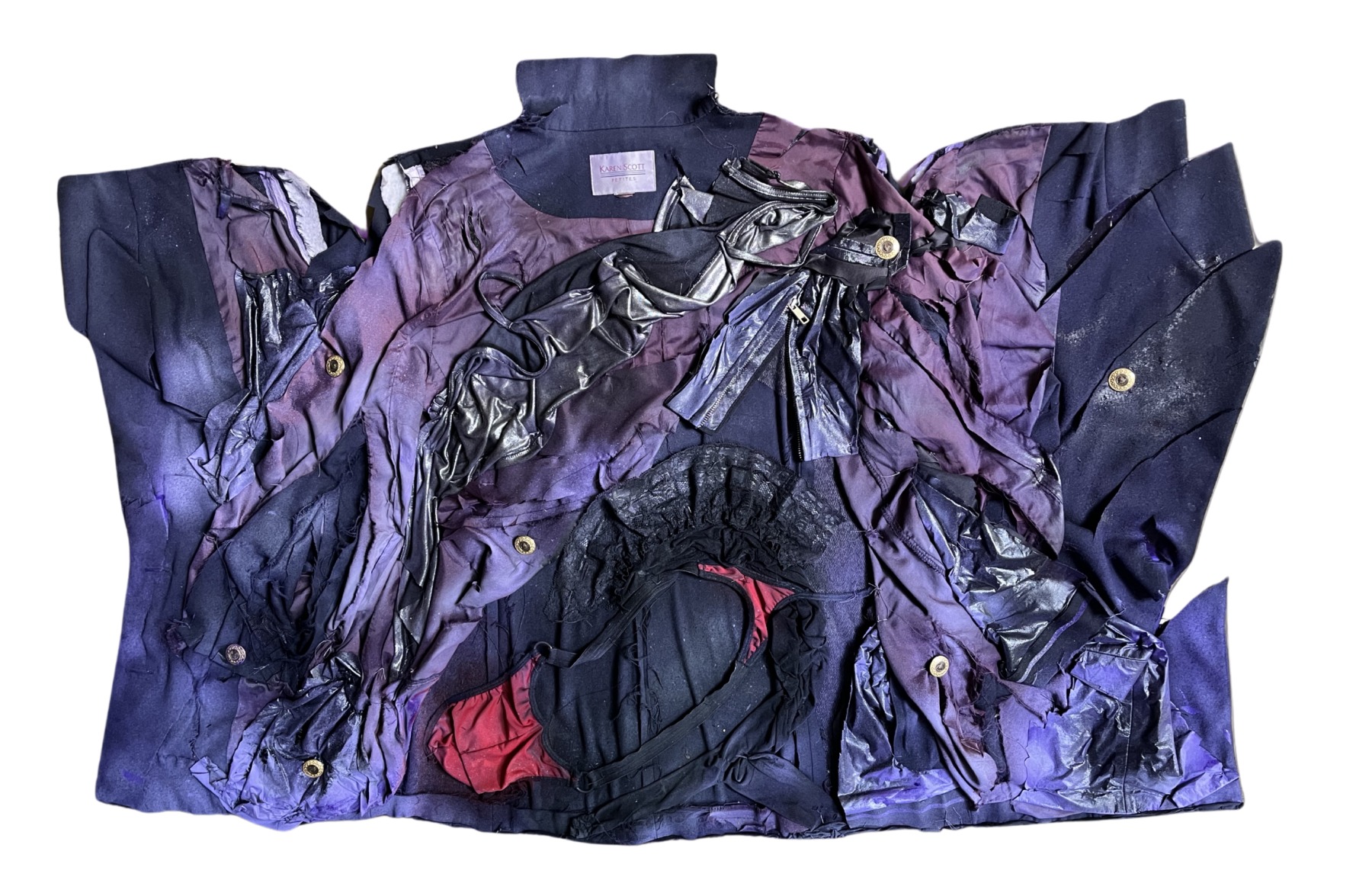
Filipka Rutkowska presenting her works to the press. Photo: Kaspars Teilāns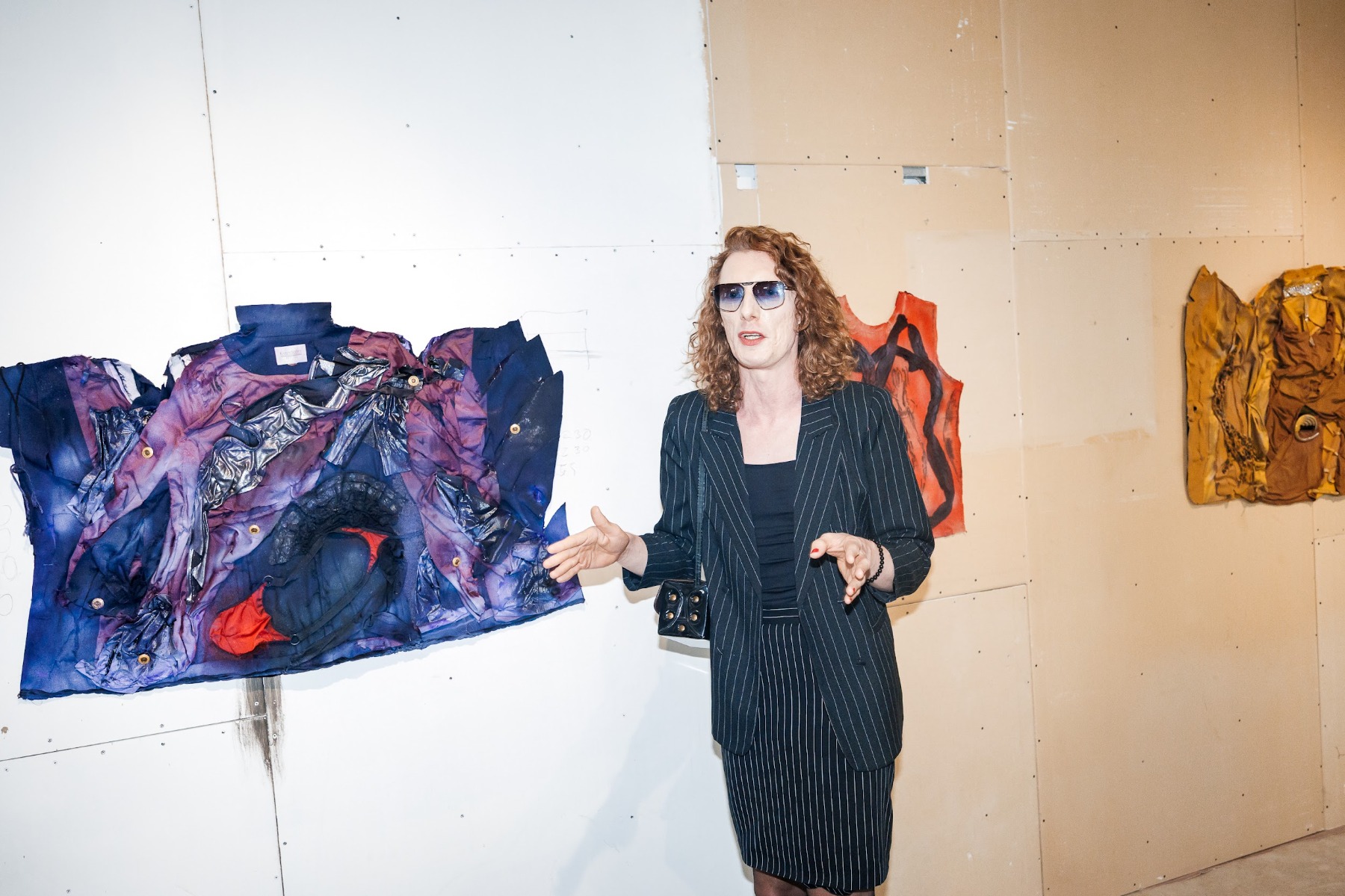
But how could it be embodied in artists’ works, in the art made today?
Of course, performativity is one obvious way that comes to mind. But as a curator, it’s quite different, because your role is to consider what others are doing – essentially, enabling other artworks to exist, offering a different language than the one of a speculative reality, a speculative world. I think, for example, of Ola Vasilijeva’s work – she’s one of the artists we invited – her work has a kind of theatricality to it. It almost challenges you to think of it as props, as scenography, but it’s also not just props. Daria Melnikova’s work does this as well: via a chandelier which offers itself as a science experiment, one which reminds us of the combustion behind the very idea of lamination and light.
Ali Cherri, another artist we invited – a Lebanese-French artist, or Lebanese artist living in Paris – has a work called The Watchman, looking at the idea of borders as spectres, spaces where the immaterial haunts as much as the physical, in Cyprus. Shadi Habib Allah’s sculptures also suggest a haunting of human presence, in this case via an excessively pedestrian, disposable item: the wrapping which surrounds a six pack of bottled water. Karol Radziszewski has a film about the last Soviet soldiers stationed in Poland, and how these soldiers become their own subject of claiming, finding a kind of eroticism in these last vestiges of the Soviet project in Poland – between Polish residents and the Soviet soldiers, or Polish men and civilians and Soviet army guys – who were left abandoned, not just by a political project, but also by society, because they existed outside of the norm.
Survival Kit 16: House of See-More. Installation view. Works of Marje Taska and Darja Melnikova. Photo: Kaspars Teilāns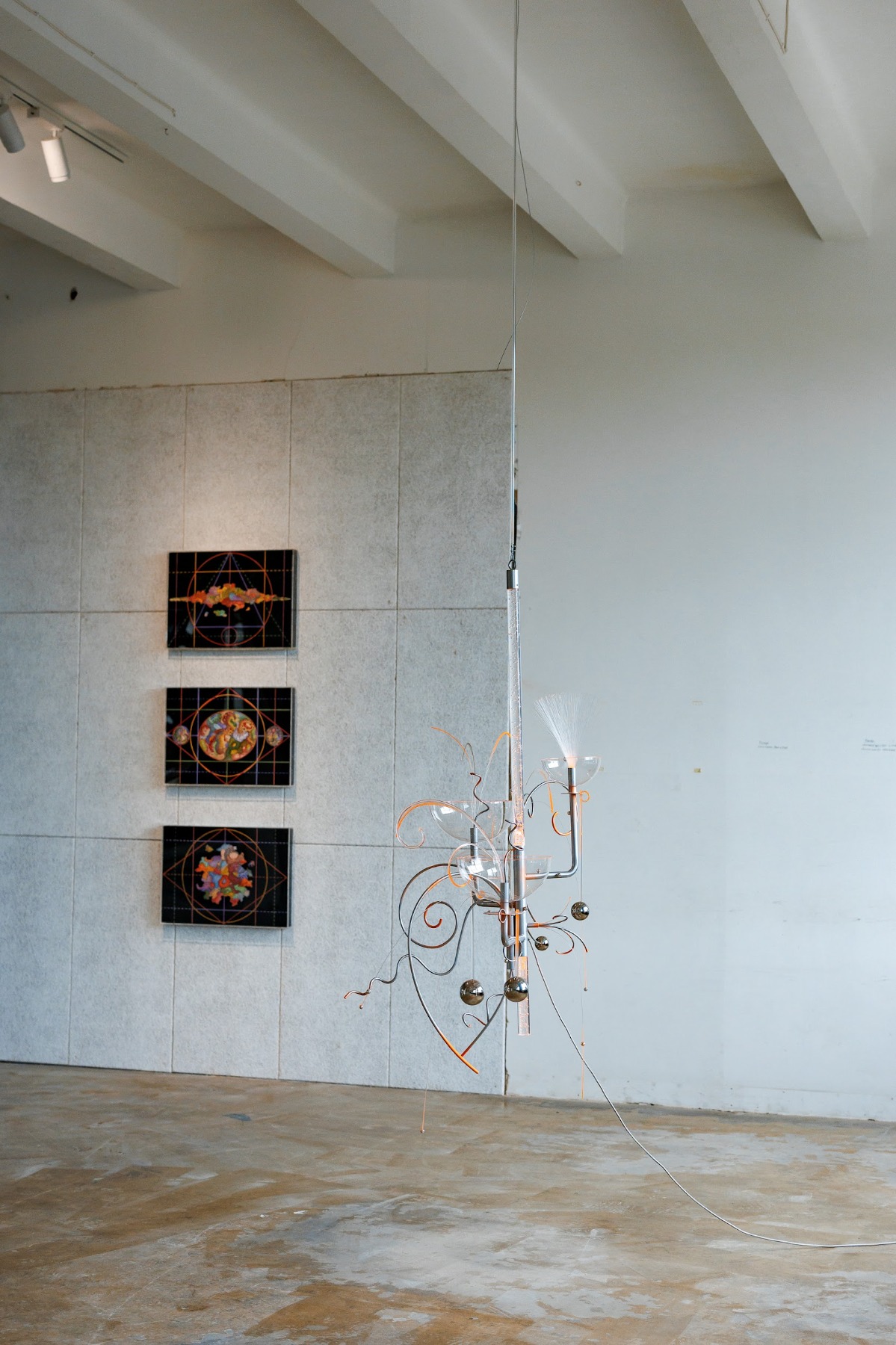
Do you make a distinction between your interests as artists and as curators?
To be honest, it’s hard to separate our interests as artists from our interests as curators. Personally, I’ve become increasingly interested in the tension today regarding the role of art between two poles. On one end, there’s the conservative view that art is autonomous – the painting in the room, where the endpoint, the teleological purpose, is simply the work itself and nothing else. On the other end, over the past 15–20 years, we’ve seen more art being used as a form of social activism, with art playing a functional, societal role. I like to think about how these two extremes can be combined – how art can be transformative in a spiritual or metaphysical sense, while also playing a functional role. For me, the most compelling experiences of art, whether as a viewer or as the public, happen when you don’t fully know what it’s doing, when you’re unsure of its role. Am I supposed to just look at it? Touch it? Use it? Understand it? The uncertainty – not knowing – is where the experience becomes most interesting.
Which is why film is generally very difficult for me. With film, there’s an immediate formal relationship between the viewer and the screen. Whereas with other forms – like sculpture or installation – that immediate dynamic isn’t necessarily there. You might not just passively watch; you may have to walk around it, sit on it, interact with it, or participate in some way.
Rovam Khimei and Yarema Malashchuk. You Shouldn't Have to See This. 2024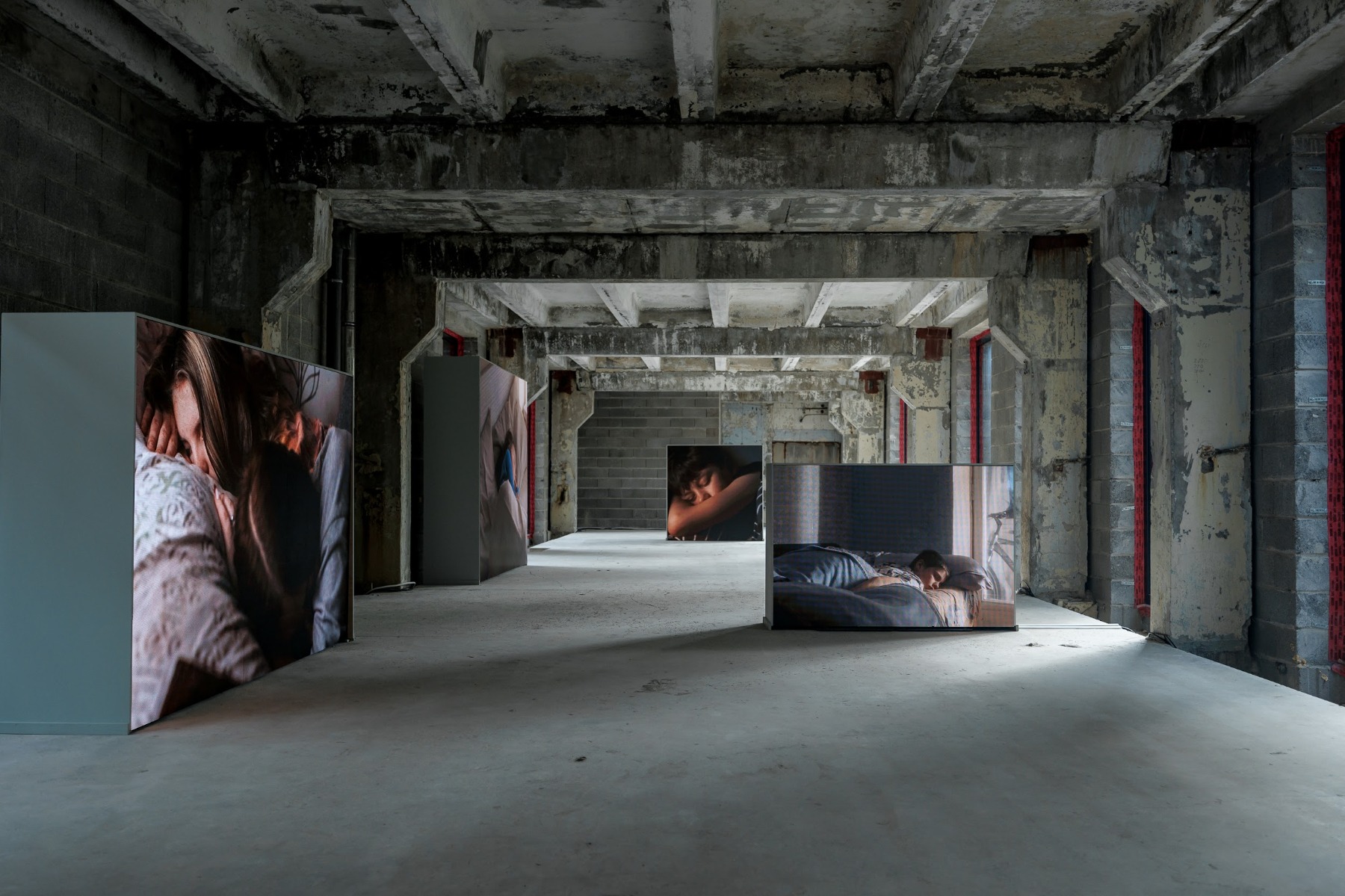
So you're trying to combine these two conceptual poles in in the projects you are creating?
For us, curating really started about five or six years ago. The 33rd Ljubljana Biennial in 2019 was the first time we really curated an exhibition. It began with the idea of how we could continue our interest in language, politics, the role of ritual today, and the role of faith in the 21st century – but without necessarily being the artists ourselves. Authorship shouldn’t be so focused on us; we wanted to explore these ideas through the work of others and help other people think about them in their own ways. There’s something fundamentally unhealthy about being an artist. I can say this after 20 years: there’s so much attention on you. It’s a professional environment that both indulges and breeds a certain egocentrism, and that’s not healthy for learning. As an artist, I can approach a subject in many ways, but when someone else approaches it differently, I learn from them. I want to see how they do it. And I think that’s what curating allows us to do: to peer into other perspectives, to see that others are working with similar topics, and to find ways to support that work while learning from it at the same time.
So an exhibition functions like an exchange centre or a learning centre.
Hopefully, yeah. I think it’s also a way of diverting resources. Sometimes an exhibition can do that. I’m just thinking of further examples… Nadia Markiewicz, a Polish artist, is working with the idea of disability as a kind of speculative wing – a power of its own.
The role of the bird, of course, is nothing new. Birds have long been seen as a form of communion – the ‘language of birds’ in many traditions is considered divine, the language of the gods. You find this in Aristophanes, in Greek literature, in Persian literature.
But the challenge for an exhibition of this order is: how do we talk about these very wide-ranging questions – from transnationalism to many different cultural perspectives – in a way that makes sense to a local audience? Because Survival Kit is first and foremost important for Riga and Latvia. And then, in the next concentric circles: the Baltics, Eastern Europe, the Nordics… Hopefully it will still resonate with the residents of Riga.
Survival Kit 16: House of See-More. Installation view. Works of Edith Karlson and Oksana Shachko. Photo: Kaspars Teilāns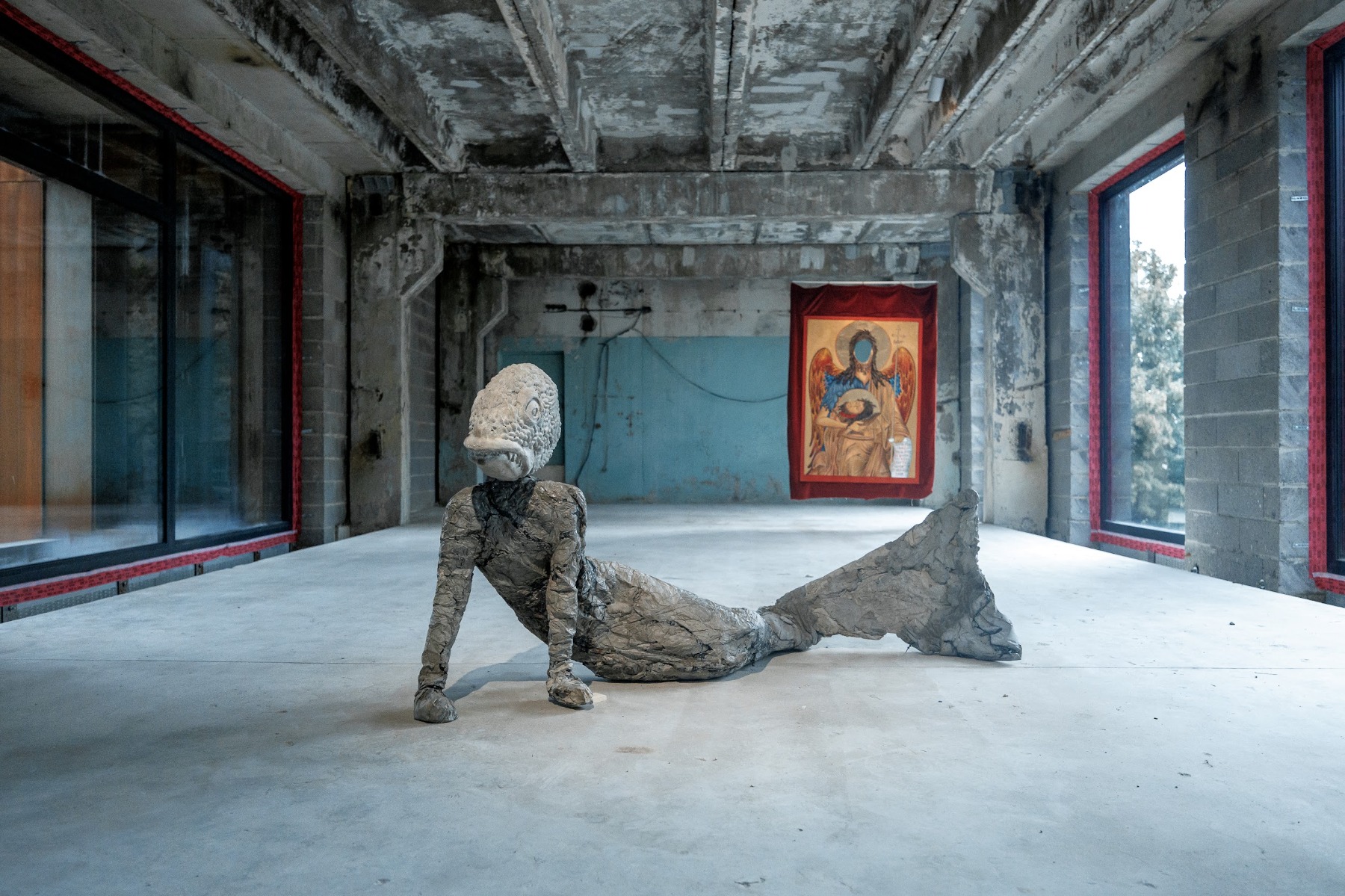
You also mentioned faith in our talk, and I was reading your interview with my colleague back in 2020. You spoke quite a lot about faith then. And maybe now, in this time of illogical fires burning all around, faith is something that could help us survive – not to solve it, but to overcome it.
I don’t remember exactly what I said in that interview about faith, so you’ll excuse me if I repeat myself. But really, one of the reasons we started Slavs and Tatars was to explore other forms of knowledge. And what I mean by that is that, you know, about 20 years ago there was a kind of consensus in the West that knowledge was purely analytical, purely logical. For us, that was strange – because faith, and religiosity in general, are first and foremost a body of knowledge. To ignore religion, like the French have done for the past four hundred years, or to ignore metaphysical inquiry altogether, is just to ignore one form of knowledge. I’m not saying it’s a better or worse form, but it is another body of knowledge. And what we try to do is to think about how, let’s say, as many organs as you have, that many forms of knowledge you can activate.
To make it simple, I often think of it almost like a kind of schema. Analytical knowledge belongs to the brain. Then there’s digestive knowledge – like in Ayurveda, or in Chinese and Indian medicine – where the stomach or nutrition becomes a form of knowing. Metaphysical knowledge, you could place in the heart, closer to a kind of gnosis, an inner knowing. So in a way, every part of the body could correspond to a different kind of knowledge. Just as each locality should also have its own way of knowing, its own epistemology.
But nowadays we risk a kind of monoculture – a kind of Starbucksification. You travel anywhere in the world, and it’s the same coffee chain, the same McDonald’s. And in the same way, you go to university in Vilnius or Tehran or Jakarta or London, and the curricula, the canons, are the same. They’re all reading the same philosophers – Descartes, Hume, Hegel, blah blah. And for me that’s just very depressing. I would hope instead that there are as many canons as there are cities or places – each locality with its own form of knowledge, maybe influenced by others, maybe not.
And so, coming back to religion – that’s a massive body of knowledge. You’re right, maybe it’s age, but I think it’s becoming harder and harder to resist these non-linear, non-analytical experiences. I don’t know if it’s really a form of coping with what’s happening in the world, as you said – maybe. But for me it’s more about a different form of knowing. It's a different form of questioning. You have different questions.
Oksana Shachko, Untitled (Miraculous Catch of Fish), 2016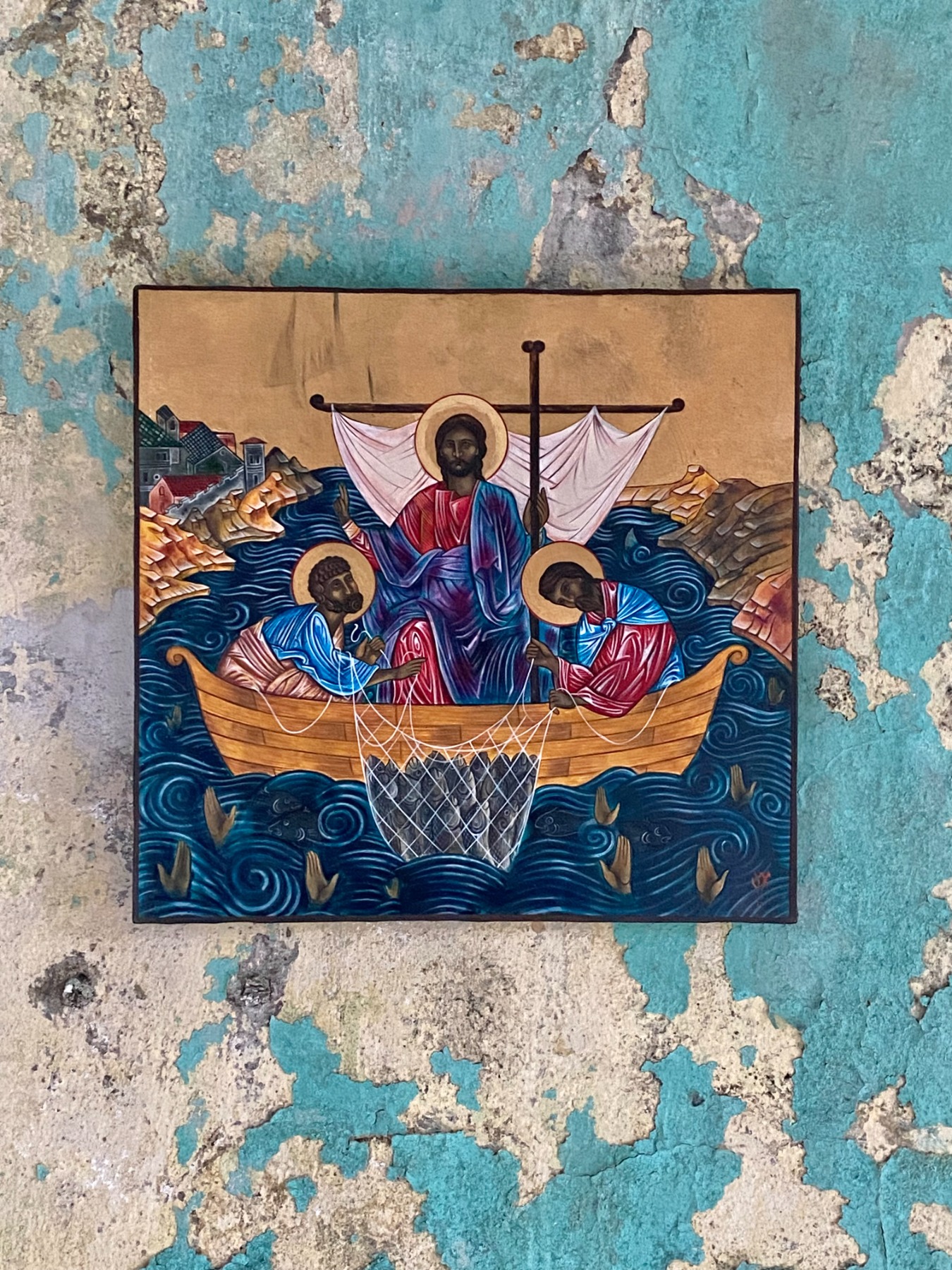
Different form of knowing what?
Well, that’s exactly the question. Knowing why things function the way they do. Knowing why in some sense – even in today’s conversation, like how we started – why quietness is important, and why sometimes it’s not. Sometimes you have to be quiet, but there’s always a flip side, a kind of yin and yang. Quietness can be important for psychological health, for example. I’ll give you one example: we were in Chicago three years ago for a residency at the University of Chicago. When we came back to Munich, my partner said, ‘You know, when you come to Germany, it feels like you’re wearing noise-cancelling headphones.’ America is so loud – everything is loud. The air conditioning is loud, it’s always blowing air. The heaters make noise. There aren’t radiators like here, only air heaters. People have their cars, everything on the speakerphone, people walking around talking so you hear everybody’s conversation. Everything’s loud. And this is not healthy for your psychological health.
But in today’s circumstances, coming back to this idea of flamboyance and extravagance, being quiet can feel politically complicit. So the question is: how do you balance being loud and being quiet? How do you stay quiet in your own mind, but loud civically? Where do I turn up the volume so that I’m not causing harm to my fellow citizens, so that I’m contributing to a healthy society – but at the same time, I’m not bowing my head and saying, ‘OK, sure, whatever the authorities say.’
So you think the answer might lie in religious tradition?
No, I think the answer is incomplete without religious knowledge. That’s right. I don’t think religion ever fully answers the question, but it provides an important perspective. Politically, I also think that for progressive people like us, we have abandoned religion to everybody else – intellectuals generally don’t deal with it. And so we’ve left religion to the masses. Then, when the Polish right-wing party says we cannot have refugees because we are a Polish Catholic nation, people like you and me have no legitimacy to respond. The first principle in Christianity is to invite the stranger into your house, right? But if we are seen as outsiders – not practicing Christians – who are we to challenge them?
So I would say that, on a strategic level, we have to engage with religion to enable meaningful social change. Without engaging with religion, I don’t believe we can push effectively against the right-wing interpretation, which I think is wrong, or create an inclusive movement. If you look at the most important social changes of the 20th century – Gandhi, Martin Luther King, even Solidarnosc in Poland – faith played a central role. Unfortunately, this role is often overlooked in our milieu.
Sergey Shabohin, Reliquary XX–XXI. Version 6 Bird Conclave, 2025 (since 2009)
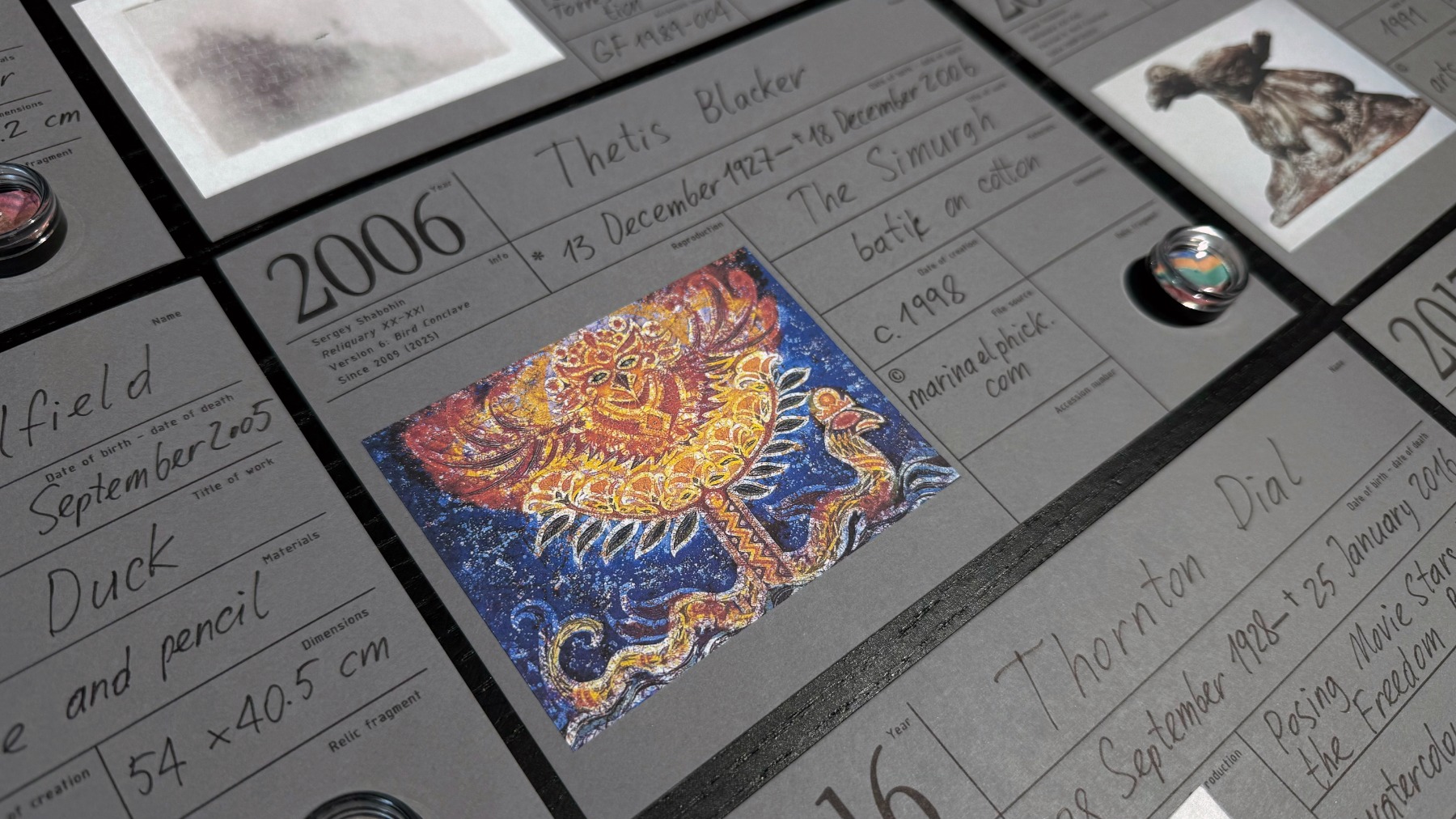
Survival Kit 16: House of See-More. Installation view. Photo: Kaspars Teilāns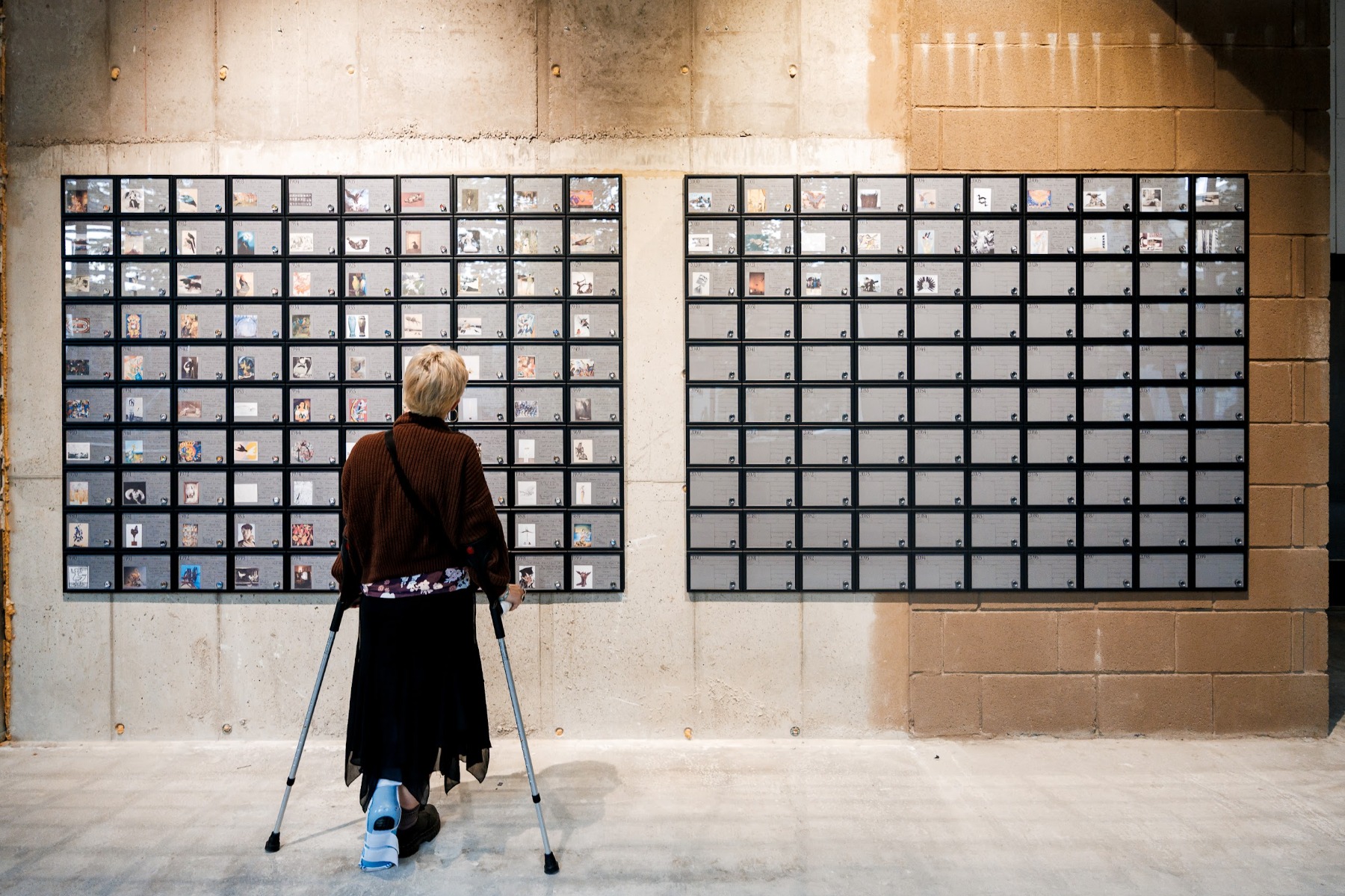
But this ignoring of faith also comes from the universalizing idea of trying to relate to humans as humans, without religion – especially since, throughout history, we’ve had so many religious conflicts and wars.
Yes, it is controversial, of course. I mean, I’m certainly not trying to diminish the destructive role that organized religion has played in the past. But, for me, it’s so obvious that these religions are all coming from the same place. I’ll give you another example: one area of research which we’ve never presented is the role of Islam in China. Basically, long story short, China was the first place where Islam was translated – and normally, Islam isn’t translated. In the West, for example, people just use terms from the Quran like Sharia law. But in China, in the 17th–18th centuries, it was translated into a Neo-Confucian idiom, because the Chinese didn’t have the concept of monotheism. They had to translate it into something familiar to them: Neo-Confucianism. And what’s interesting about Islam in China is that, ironically, China may be the only place – or at least the most important place – that understands Islam as a Western religion.
For the Chinese, Islam, Christianity, and Judaism are all Abrahamic religions. And yet somehow the West has convinced everyone that Islam is an Eastern religion and Judaism and Christianity are Western – which is just completely wrong. It’s historically inaccurate. Ironically, you have to go all the way to China to understand this. They get it: for them, Islam is Western. Of course, the West considers Buddhism, Taoism, and Confucianism as Eastern religions, and that’s correct. But Islam? It’s through and through a Western religion.
And I think that’s part of why the role of the Simurgh is important. Simurgh was very significant in Sufism – it’s a mystical Sufi bird. And I think it’s another element that’s important to highlight in the Eastern European context.
You know, Eastern Europeans very often think, “We don’t need to deal with this because it’s not our problem. We don’t have colonies; it’s a Western European issue. Muslim immigrants, Islam – it’s not our responsibility.” But that’s wrong. If you look at the role of the Tatars in the Polish-Lithuanian Commonwealth, the mosques in Belarus, Lithuania, and Poland, or even the way Eastern Europe defined itself against the “other” – the Turks – Islam has always been part of the region’s history.
And so, I think what you just said – and it’s funny, I haven’t heard this word in a long time, like you said about transnationalism – it’s “universalism”. These are terms that feel outdated today. When I hear “universalism,” I think of something from 20–30 years ago. And that’s the problem: how can we aspire to a form of universalism that isn’t imposed from France or the West? A non-imperial, grassroots universalism. What is that? What does it look like?
For me, it’s not a political project. It’s primarily a cultural project. I don’t mean any kind of proletarian or economic universalism – not at all. I mean a form of epistemological universalism, a kind of cultural universalism. And it could be regional. Regionalism is something fantastic because, in a way, it’s another approach to being transnational.
For me, you know, we’ve never focused on individual countries in our work over the past 20 years. We’ve never dealt with single nations like Turkey, Iran, Russia, Azerbaijan, or Uzbekistan. I just find that very boring. Flags, for me, are just… a bit like sugar – you can consume them, but it shows a certain lack of sophistication. I think regionalism is a way to resist nationalism on one hand, and imperialism on the other.
Bekhbaatar Enkhtur, Falcon, 2025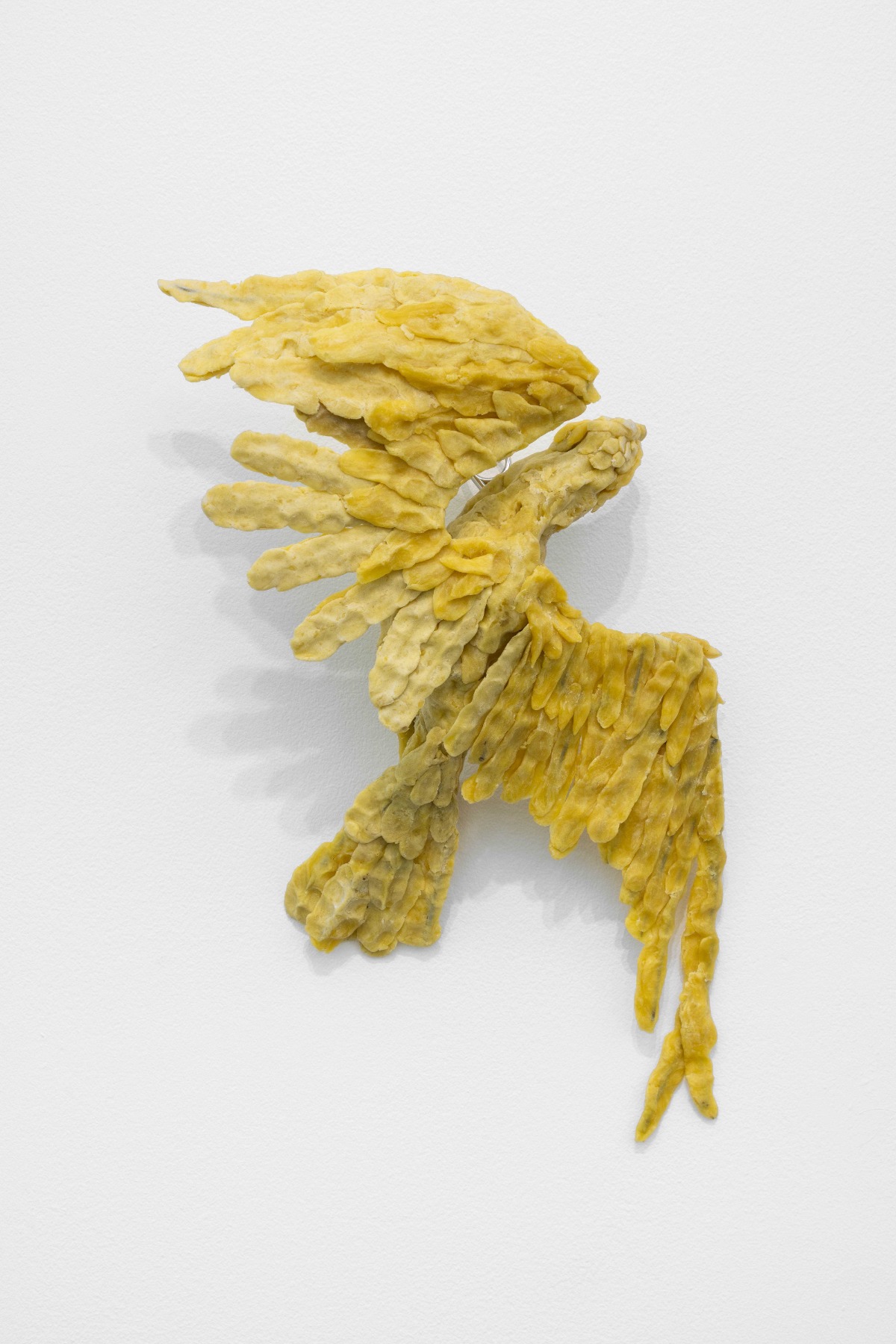
Simurgh is a bird. And birds are quite transnational because they migrate all the time and actually visit more countries than most of us do.
There is an epic where Simurgh appears, called The Conference of the Birds. It’s very famous – in fact, Mārtiņš Viļums, a Latvian composer even created a piece inspired by Simurgh and The Conference of the Birds. For Persian culture, this book is somewhat like the Odyssey or Iliad is for Greek culture; it’s a foundational 12th-century text. In it, all these birds are searching for Simurgh over the course of about 600 pages, written in rhyming couplets.
The story is beautiful because the birds’ search is interspersed with Sufi allegories – mystical, religious, and philosophical. Some birds are too lazy, some too vain, some too hungry. So they all have like human weaknesses. By the end, only thirty birds remain, and they discover that Simurgh is inside a fortress. When they enter, there is no Simurgh, only a pond of water and their own reflections.
The idea is that you shouldn't look for God or the divine outside yourself; the divine is inside you, and only through communion with others can you truly see it within yourself. There is no outside, no old man representing God – this is a beautiful moral lesson. What I find amazing about this author is that at the end of 700 pages, he uses a pun. The book is very serious, and a pun is usually considered the lowest form of humor, almost the stupidest form of writing. Yet he uses it as a kind of punchline. In Persian, “Si” means 30 and “Murgh” means bird, so the name of the bird is literally “30 birds.” I thought it was amazing that after using high metaphysical poetic language for 600 pages, he ends with a playful pun – a rare mix of high and low.
You know, it’s as if Homer had made some kind of joke at the end of the Iliad or the Odyssey – it just wouldn’t fit, it wouldn’t make sense. And then I realized something similar when looking at eagles all over Western Europe. The one country without an eagle is France. France uses the rooster. The symbol of France is the rooster – Le Coq. Lecoq Sportif, you know, the brand. I wondered, why a rooster? Everywhere else it’s an eagle – Poland, England, Germany – all eagles. And it turns out, around the 12th or 13th century, the Gauls chose the rooster because in Latin, the word for rooster is “Gallo,” which sounded like them. Essentially, they picked a national symbol based on a pun, a homonym. Can you imagine creating a national emblem because of a calembour?
What I find really beautiful about birds is this spiritual element – their singing. People often believe in it, and it’s true also in Islam, that the courtyards of mosques are filled with birdsong. It’s as if the birds themselves have chosen these spaces as sacred, as spaces of communion. At the same time, of course, bird talk is just nonsense. It’s an elevated language, but also just chit-chat, empty words. I really like this mix of high and low.
Slavs and Tatars. Stilletos 'C'.2024. Photo: Kaspars Teilāns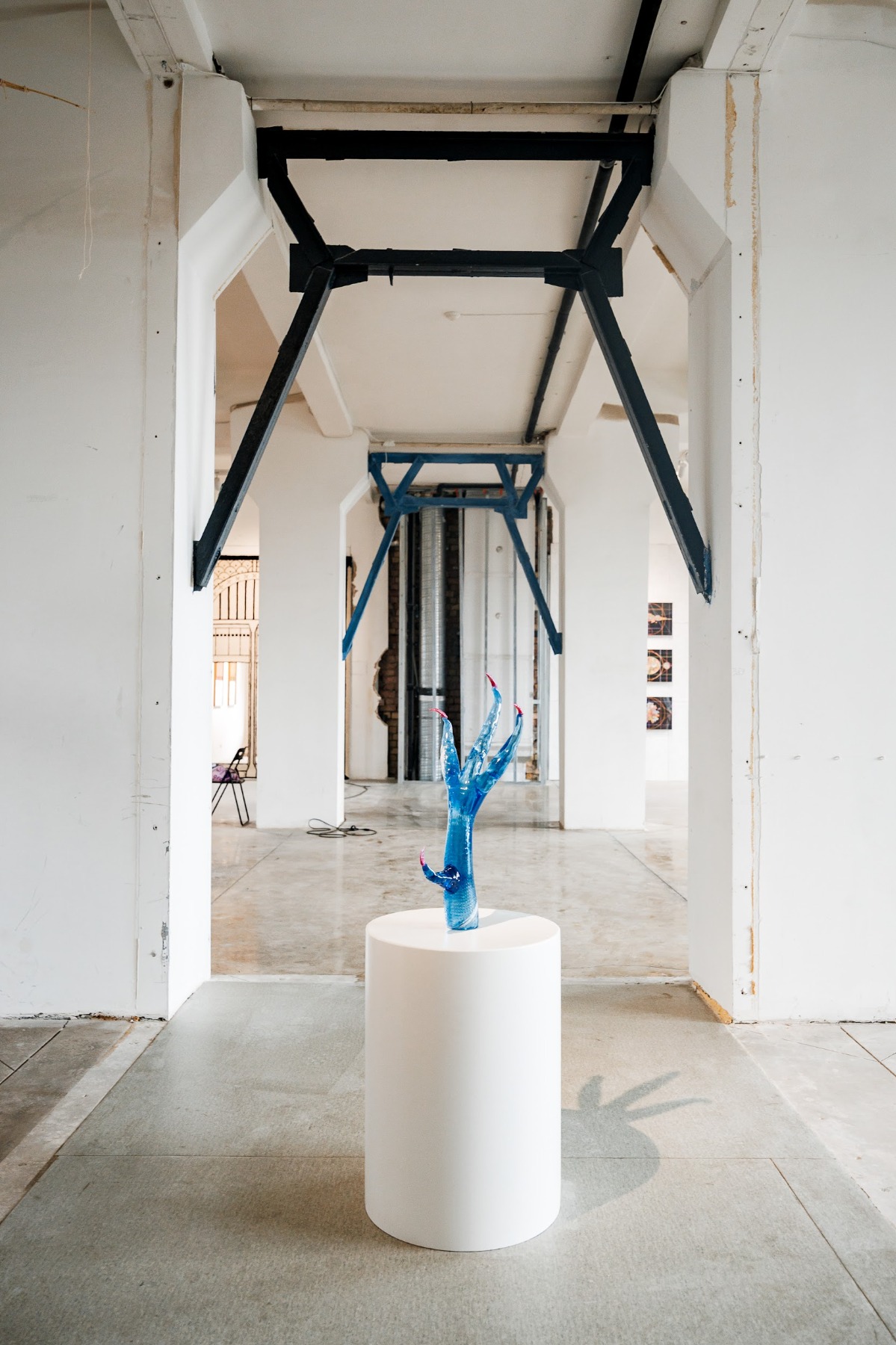
So it’s meaningful to make a joke at the end of something high-level spiritual?
Yes, to make a joke at the end of a spiritual exercise, the last place you’d expect a joke. It’s like if you went to a six-day silent retreat or a yoga session, and at the very end, the instructor made a really bad scatological joke – you’d think it doesn’t make sense, it doesn’t fit with the ethos.
But somehow it connects everything – the high and the low – into a kind of self-reflecting system.
If done well, and the timing is right, yes.
Very good. That’s the perfect ending. Thank you!
Title image: Sana Shahmuradova Tanska, Relativity of Simultaneity, 2023